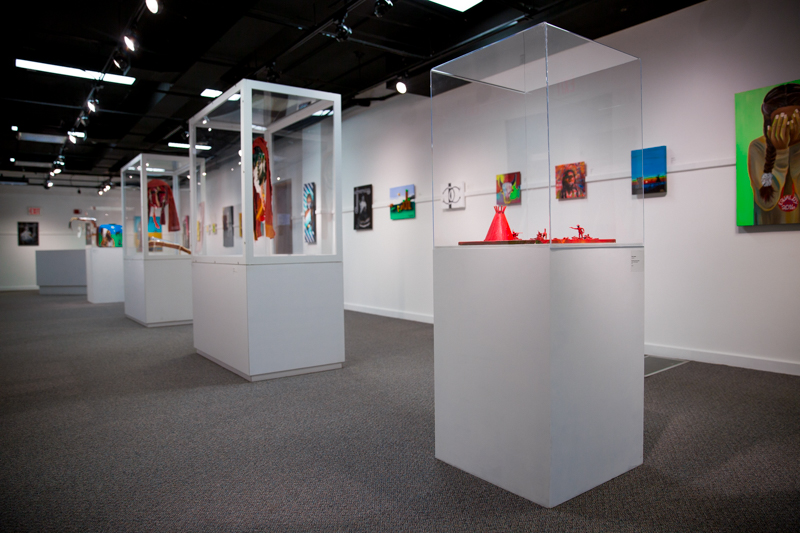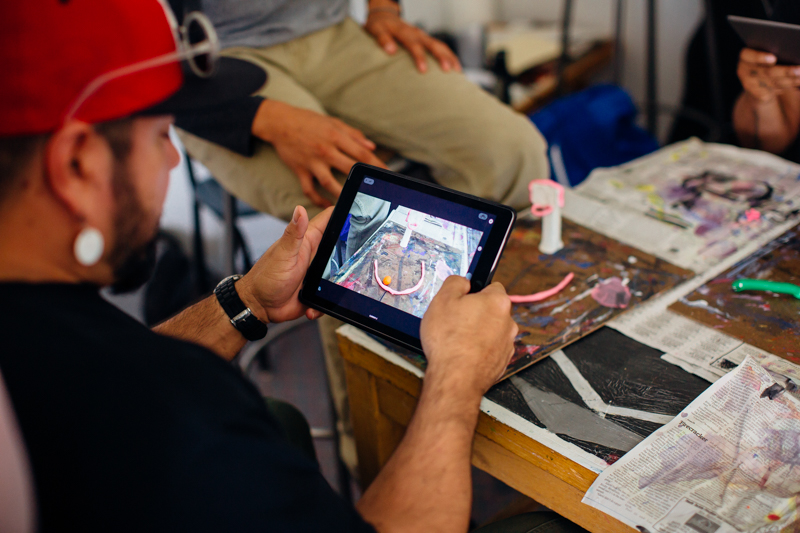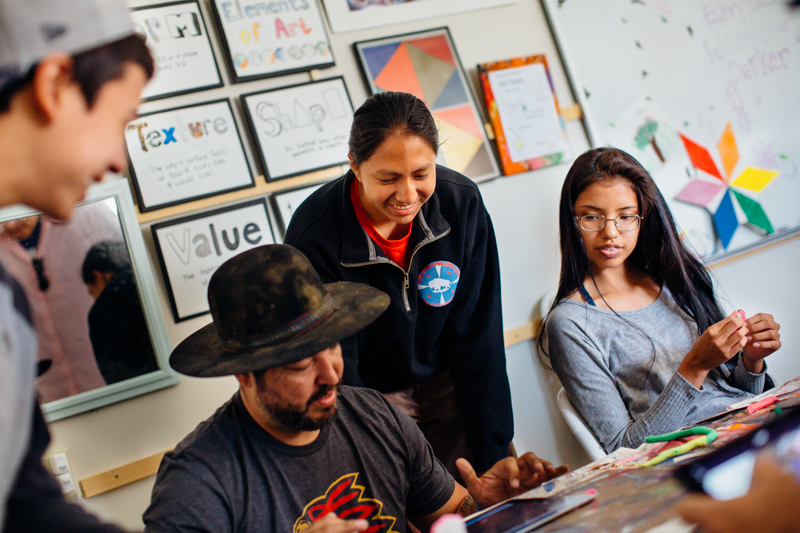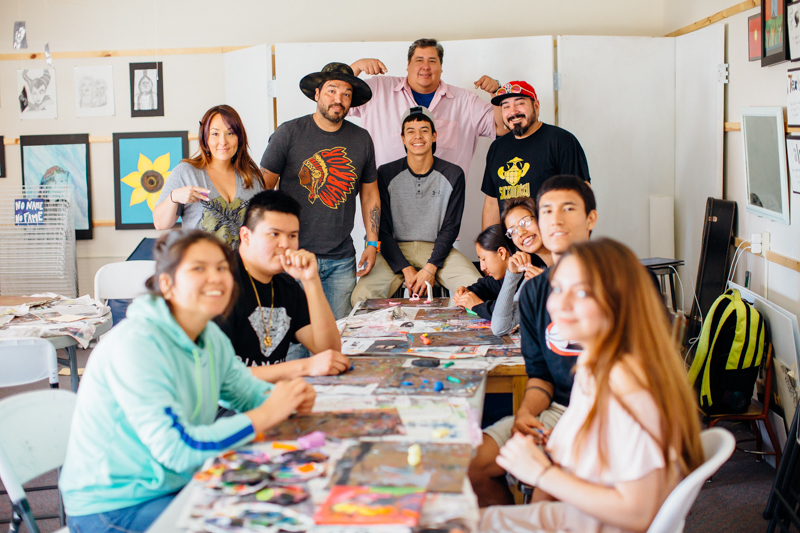“Native Pop” Introduces Pine Ridge Students to New Definitions of Native Art
posted June 21, 2017

All through this winter, the pure white walls in The Heritage Center’s gallery were alive with the vibrant color and bold graphics of “Native Pop.” Created by a collective of established and emerging Native artists, the exhibition uses the power of pop art to challenge conventional definitions of Native American art—and stereotypes about what it means to be Native today.
“The theme of Native Pop…is to show that, as artists, we’re still here, we’re still relevant, and we’re not just creating traditional pieces from the past,” said Brent Learned, one of the creators of Native Pop, who is based in Oklahoma. “We’re doing things now.”
And to celebrate the final weeks of the exhibition, four Native Pop artists traveled all the way to Pine Ridge—to share their paint and canvases with the next generation of Native artists. Through the work of The Heritage Center’s curator Ashley Pourier, the artists of Native Pop spent three days on campus, sharing their stories and engaging with students, staff, and community members on the importance of self-expression in Native communities.

“It’s implied that Native art should be what people read in history books and see in Hollywood's portrayal of Native Americans; beadwork on leather and pottery and other traditional forms of art—and that we haven’t evolved as the rest of the world has,” said Ashley. “Through the Native Pop exhibition, these artists are starting a movement to reclaim and re-appropriate native imagery in popular culture, and present an alternative vision of what Native art is.”
Artists Mallory Taylor, Joe Hopkins, Brent Learned and Steven Paul Judd worked with Ashley to organize a series of workshops designed to get students creating. The first workshop focused on using street art to spur self-expression, and included a painting project for students to take home. Together, the artists and students used spray paint to capture phrases and images on a mural-size piece of vinyl. During the second workshop, the artists taught students a method of stop-motion filmmaking. Each student had a chance to sculpt in clay and then create a 10 to 15 second film.

“In a way, we were teaching them different trades they didn’t know they had in them. As an artist, you can draw, paint, or sculpt, but it all boils down to expressing yourself, and that’s the one thing we wanted to stress with these workshops,” said Brent.
“Every kid had their own personal way to express themselves. And that’s one of the things I told them about art: there is no right or wrong. It’s just how you want to tell the story.”
Following the workshops, The Heritage Center hosted a public reception in the gallery, to give community members an opportunity to connect with Native Pop artists and view the exhibition. And finally, on Saturday morning, the artists led a roundtable discussion to field questions about what inspires them.
“The response to having Native Pop in the gallery has been really extraordinary—visitors from all over the world and, more importantly, the local community have had a chance to witness the many directions that art produced by Native Americans can take” said Ashley. “Having the artists here on campus really brought that to life for our students, and for our community.”

Photos © Red Cloud Indian School/Willi White '08